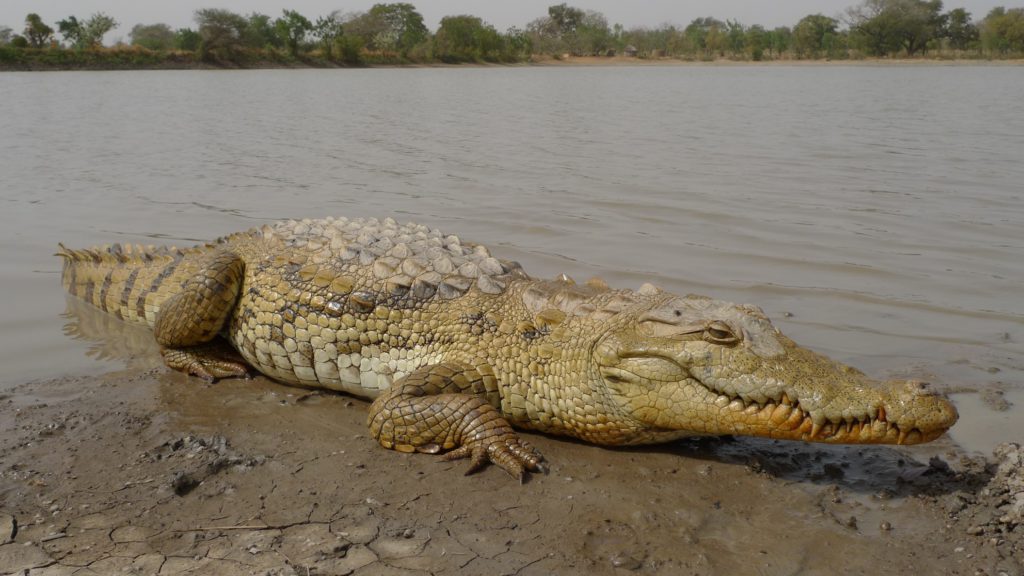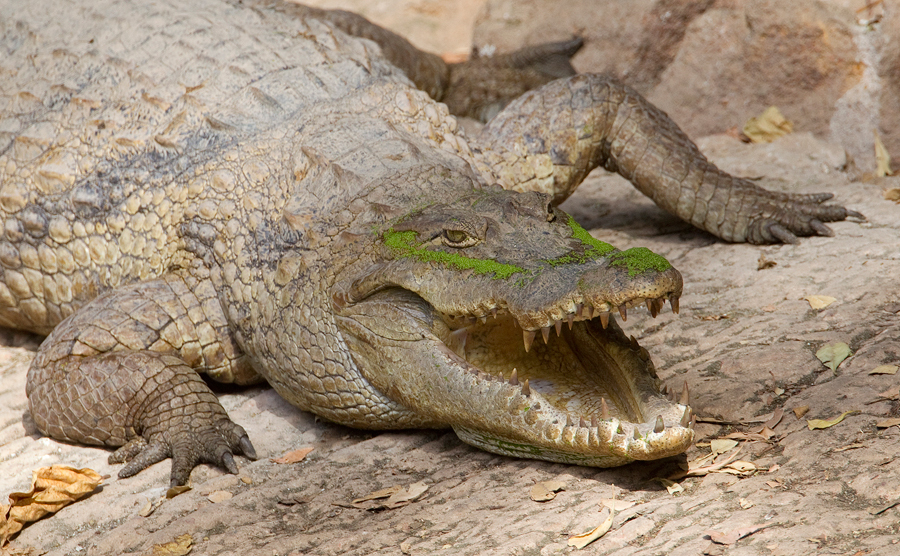Orange Crocodile (Crocodylus suchus), or cave dwarf crocodile, there are one of the most mysterious representatives of crocodilesfound in the dark caves of Central Africa.
He unusual orange color it has become the subject of numerous studies and disputes among scientists. Some believe that it exists separate view, others-only west african crocodile variant (Crocodylus suchus), which has adapted to life in caves.
In this article, we will take a closer look at origin, lifestyle, unique features, reproduction and threats to the existence of this rare crocodile.

Scientific classification
🔬 Taxonomy of the orange crocodile:
✔ The Kingdom: Animals (Animalia)
✔ Type: Chordal (Chordata)
✔ Class: Reptiles (Reptilia)
✔ Row: Crocodile-like (Crocodylia)
✔ Family: Crocodile trees (Crocodylidae)
✔ Gender: Crocodiles (Crocodylus)
✔ View: West African Crocodile (Crocodylus suchus)
📌 Interesting!
Some scientists believe that the orange crocodile may be a separate subspecies or even a new species, which separated from the main population due to adaptation to the cave environment.
Discovery and provenance
🕵 Who discovered the orange crocodile?
* This view was discovered in 2008 in the Abanda caveslocated in Gabon (Central Africa).
* The discoverer was scientist Olivier Testa, which investigated the biodiversity of caves.
* The group was found during the expedition dwarf crocodiles with unusual orange skin.
📌 Interesting!
These crocodiles they live in complete darkness and feed on bats, crayfish and insects. they probably formed a separate isolated population thousands of years ago.
Appearance and features
💠 What does an orange crocodile look like?
• Size: Relatively small – 1.5-2 m long.
• Weight: 30-50 kg.
• Color scheme: From from dark brown to bright orange.
• Oko: Smaller than most crocodiles, which is associated with living in the dark.
• Scales: It has a coarser texture and an increased number of osteoderms (bone plates).
📌 Why orange?
It is believed that this color developed due to:
✅ Prolonged exposure to bat guano, which contains acids that eat away at skin pigment.
✅ Adapting to a dark environment - in the dark, less protective paint is needed.
✅ Genetic mutationscaused by isolation from the outside world.
Range and habitat
🌍 Where does the orange crocodile live?
* Found only in caves Abanda (Gabon).
* Lives in underground lakes and rivers flowing through the cave system.
* Feeds on small organisms that live in caves (insects, crustaceans, small fish).
📌 Interesting!
This the only known species of crocodile that lives in caves!
Lifestyle and behavior
🔹 Activity and territoriality
• Nocturnal predator "hunts in total darkness.
• Very much cautious and skittish.
• Non-aggressive to humansunlike most crocodiles.
🔹 Hunting and nutrition
* Hunts for help sensitive sense of smell and hearing.
• Main meal:
✅ Crayfish
✅ Bats falling into the water
Насеком Insects
✅ Small fish
📌 Interesting!
Unlike other crocodiles, this species almost never goes on landbecause its eyes and scales are not adapted to bright light.

Reproduction and development
💡 How does the orange crocodile breed?
* Due to the isolation in the caves, its reproduction is poorly studied.
* Suggest that females lay eggs. 10-20 eggs in protected parts of caves.
* Babies hatch through 80-90 days.
📌 Interesting!
Due to the small number of individuals, there is a risk inbreeding (related crossing)which can cause genetic abnormalities.

Threats to the species and their protected status
⚠ What threatens the orange crocodile?
• High population isolation "because of its small population, this species is very vulnerable.
• Cave pollution - ingestion of chemicals from the environment can disrupt a fragile ecosystem.
• Potential poaching - the orange color makes it valuable for illegal trade.
🛡 Security status:
✅ Not yet officially listed on the IUCN Red List.
✅ Further research on population size and genetics is needed.
📌 Interesting!
Scientists are considering the possibility of inclusion of this species in the program for the protection of unique underground ecosystems.
Conclusion
Orange crocodile – a unique representative of vertebratesSurvivor of the harsh conditions of the underground caves of Gabon.
💡 Basic facts about it:
✔ The only crocodile living in caves
✔ It has a rare orange color
✔ Hunts in total darkness
✔ It has a limited population and needs to be protected
This unique view needs further research and protectionsince it can be key to understanding reptile evolution in closed ecosystems.